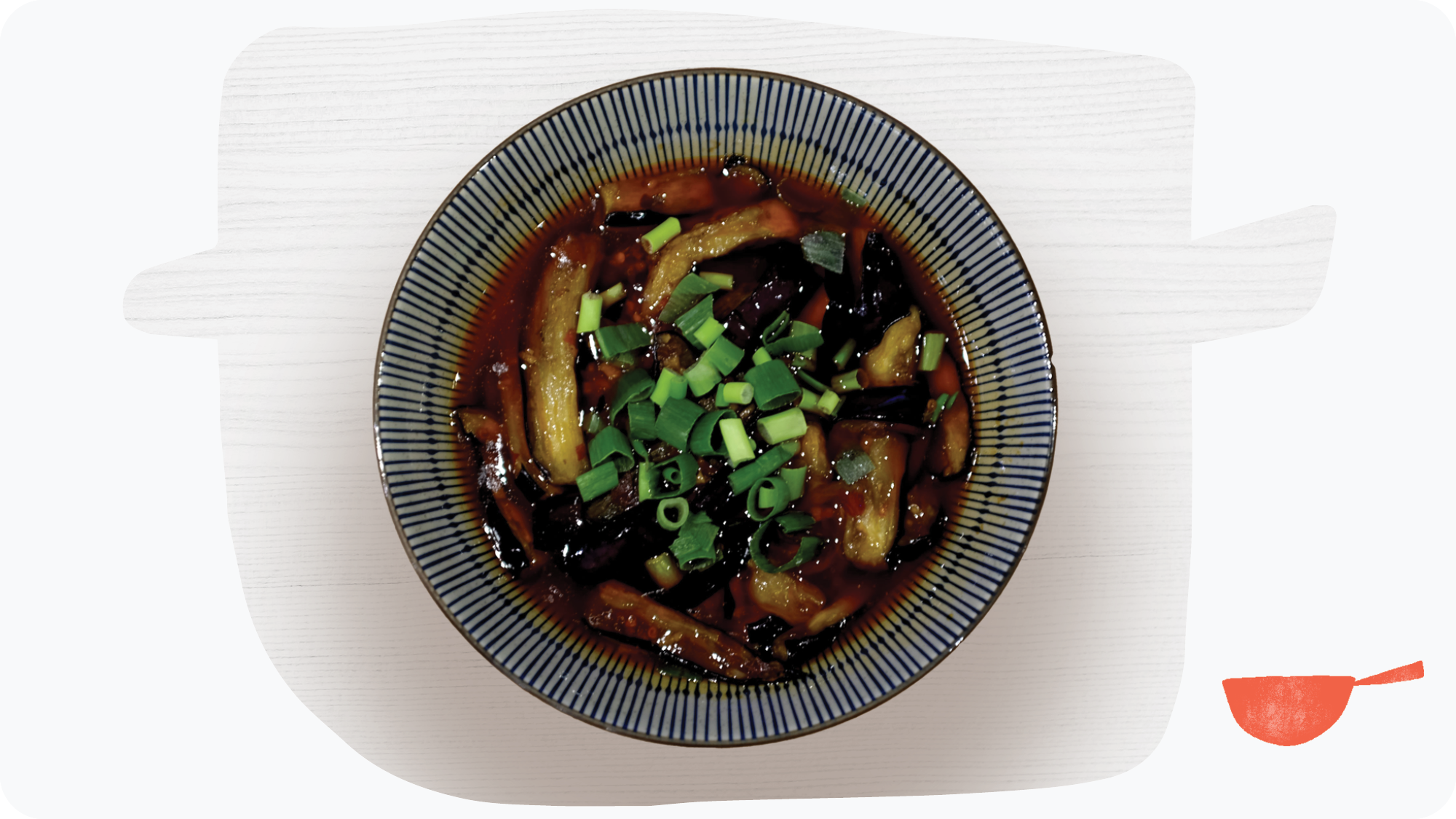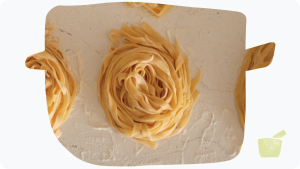Less spicy than it looks: the subtly complex flavours of a Sichuanese meal (and the best aubergines I’ve ever eaten).
Sichuanese food has a well-deserved reputation for being among the spiciest in the world. Many dishes arrive swimming in a deep red oil, with dried chillis and sichuan peppercorns lurking in the depths ready to set hungry mouths on fire.
For much of my life this was the only thing I knew about Sichuan dishes – and as someone who doesn’t seek out extreme spice it had always left me apprehensive to order them. Then I tasted fish-fragrant aubergines, and my entire perspective changed. Flavours I had never encountered before emerged from that deep red oil, while the “blow your head off” spiciness I was anticipating never materialised. I was transfixed (honestly, these aubergines are that good).
Hungry for more, I bought a copy of Fuscia Dunlop’s The Food of Sichuan and started attempting new recipes. I love starting to cook cuisines with which I’m entirely unfamiliar; it’s like being a toddler – gradually learning to navigate a world by watching and learning from others, before being able to take your first steps unaided and ready to explore further.
One of the first meals I prepared from this book paired Dunlop’s version of fish-fragrant aubergines with a dry-fried chicken recipe from one of her favourite restaurants in Chengdu. This was my jumping off point into cooking Sichuanese food, and it’s still a meal to which I regularly return – let me tell you why.
Seriously, try these aubergines
The first thing to say is that fish-fragrant aubergines do not contain any fish, nor do they smell of fish. The name of the dish comes from the way the aubergines are cooked and seasoned, which is similar to how many fish dishes are traditionally prepared in Sichuan. The aubergines are fried and then cooked in a mixture of chilli bean paste, ginger, garlic, stock, soy sauce, chinkiang vinegar and sugar – which is then thickened with a bit of potato starch.
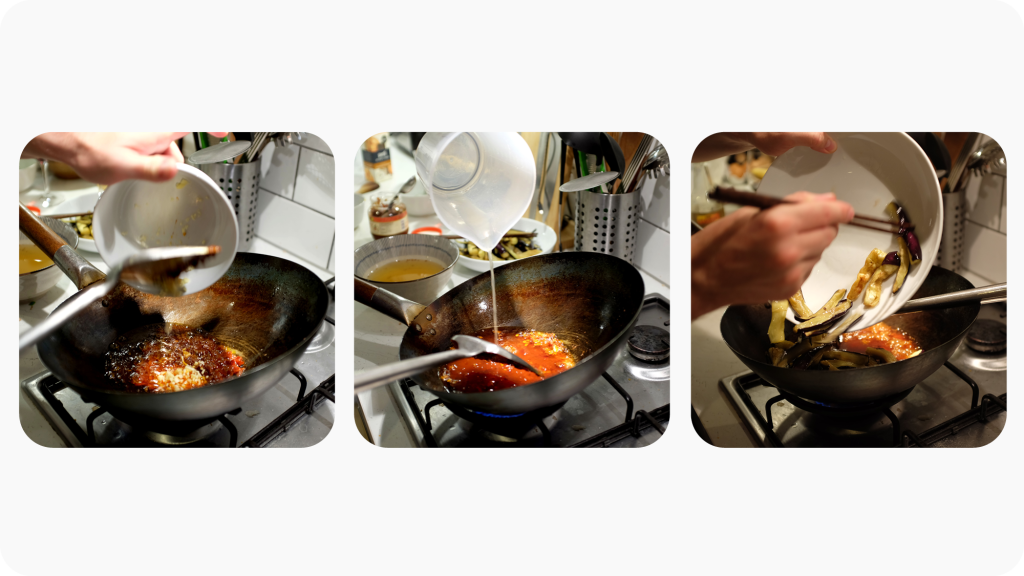
The result is a bowlful of soft, golden aubergine slivers submerged in an aromatic red oil that creates a complex balance of flavours: rich saltiness from the the stock and soy sauce, a hint of spice from the bean paste, fresh ginger and garlic, and a tangy sweetness from the chinkiang vinegar and sugar.
These flavours infuse into the flesh of the aubergine pieces, which in turn make each mouthful as smooth as butter – balancing against the crunch of fresh spring onion greens sprinkled on top. It’s a rare thing to say, but I would honestly describe this dish as perfect.
That being said, a man can’t live by aubergines alone…
Bringing the heat
Dry-fried chicken is a great compliment to the meal – packing some extra flavour and spice and also being served dry, as opposed to the oily red sauce of the aubergines (it is possible to have too much of a good thing). Using similar spices to fish-fragrant aubergines, the chicken is fried alongside garlic, ginger, chilli bean paste, soy sauce and sugar – but also added to the mix are some dried chillis, sichuan peppercorns and a dash of chilli oil.
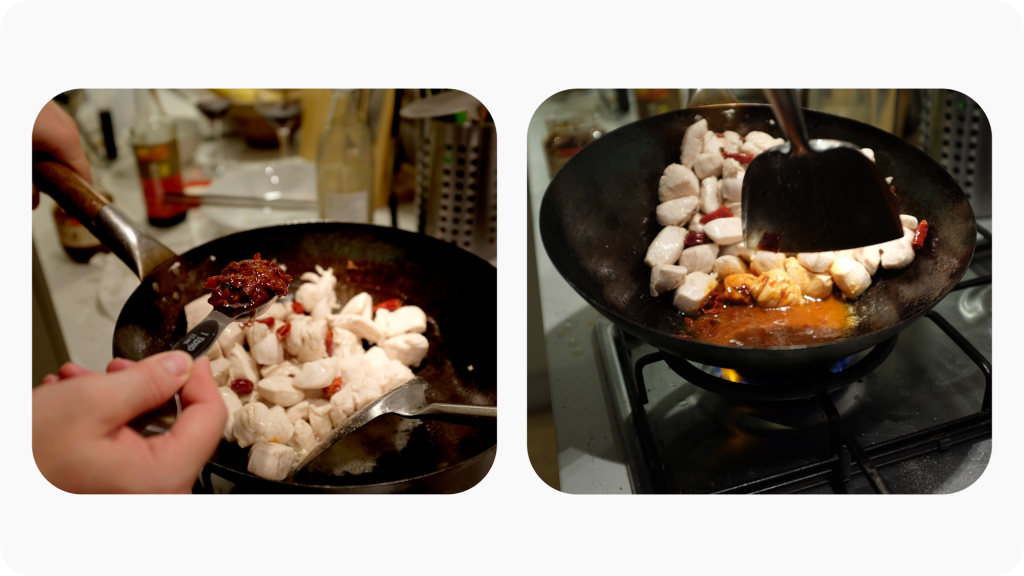
These three ingredients not only give the dish a bit more heat, but also a playful variety of spice: salty oiliness from the chilli oil, sharp spiciness from the dried chillis, and the telltale tingling numbness from the sichuan peppercorns.
Each mouthful of chicken is not only deliciously rich and a little gingery, but it also plays with your senses in a way that makes you pay attention to and appreciate the subtle freshness brought by the Turkish peppers and spring onion whites added at the end of the cooking process.
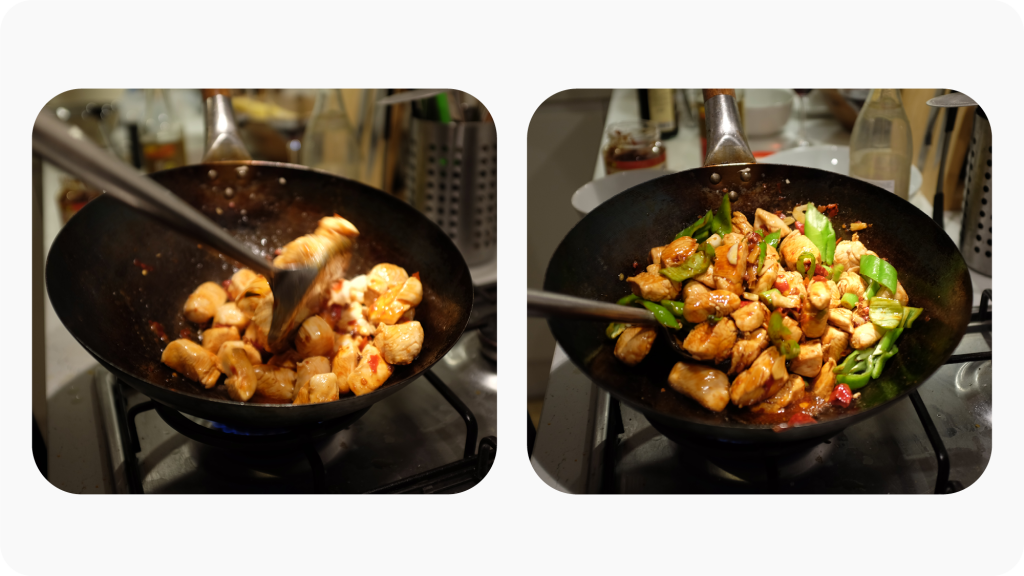
Cooking and tasting this dish gave me a new perspective on the famed spiciness of Sichuanese cuisine. Previously I had considered “spiciness” to be a monolithic thing – foods were spicy or they weren’t (if you wanted to get really granular you could turn to the scoville scale and start talking about capsaicin levels).
I hadn’t really given much thought to the different ways in which food could be spicy, how these differences could change the experience of a dish – or how they could be used in tandem to create unique flavours and sensations. Now I’ll regularly think about what type of spice I’m trying to create when I’m cooking, not just how spicy I want it to be, and it’s definitely made me a better cook.
Cooking and control
With dishes such as these, it’s not just the learning experience of exploring a new cuisine that I enjoy, but also the level of control it gives me over the flavour and spice. By cooking at home, you can easily control the level of spice to match your taste: if a dish is meant to be incredibly spicy, it doesn’t have to be so, and if it’s meant to be mild you’re more than free to put some more heat into it.
If you want to add some more dried chillis, or to de-seed them before throwing them into the mix – it’s very easily done. Maybe you’d like to add some of the sediment from the chilli oil to bring up the heat, that’s another simple adjustment to make when standing over the wok. The flavours available in dishes such as these are wonderful, and by cooking them at home it’s easy to match them to the level of spice that you can handle.
What I can say for now is that a meal of fish-fragrant aubergines and dry-fried chicken, served with some jasmine rice on the side, is a wonderful experience – and an aversion to spice is no reason to shy away from Sichuanese cooking.
Recipes
If you want to make both the recipes I describe above they can be found here:
- Fish-fragrant aubergines: The Food of Sichuan by Fuscia Dunlop (p.266)
- Dry-fried chicken: The Food of Sichuan by Fuscia Dunlop (p.186)
